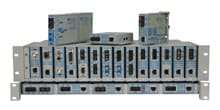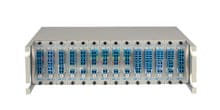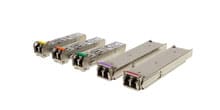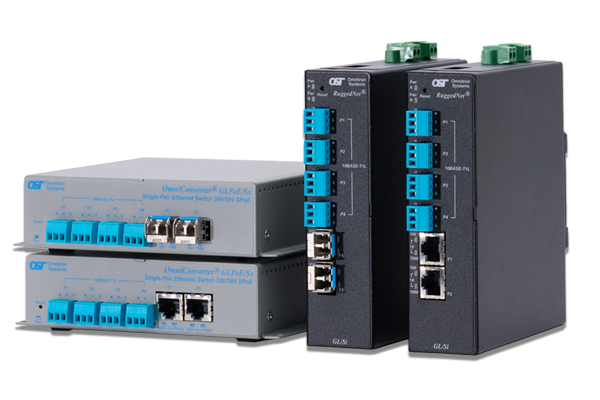- Products
- PoE Media Converters and Switches
- Ethernet & PoE Switches Product Selector
- Multi-Gigabit Ethernet and PoE Switches
- PoE PSE Commercial Switches
- PoE PSE Industrial Fiber Switches
- PoE Industrial Copper Extenders
- PoE Powered Media Converters
- PoE PSE Media Converters
- PoE Extenders & Injectors Product Selector
- Pluggable Transceivers Product Selector
- Single Pair PoE Products
- Product Lines
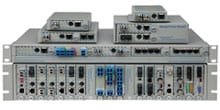
- iConverter Managed Multi-service Platform
- Copper to Fiber Media Converters
- Ethernet Media Converters
- 10 Gigabit Copper-to-Fiber
- 10/100/1000 Copper to 10 Gigabit Fiber
- 10/100/1000 Copper-to-Fiber with Integrated Management
- 10/100/1000 Industrial Copper-to-Fiber with Integrated Management
- 10/100/1000 Copper-to-Fiber with VLAN
- 10/100/1000 Dual Media Converter with VLAN
- Gigabit Copper-to-Fiber
- 10/100 Copper-to-Fiber with Integrated Management
- 10/100 Industrial Copper-to-Fiber with Integrated Management
- 10/100 Copper-to-Fiber with VLAN
- 10/100 Copper-to-Fiber
- Fast Ethernet Copper-to-Fiber
- Fast Ethernet Redundant Links
- 10Mbps Copper-to-Fiber
- 10Mbps Copper to Coax
- TDM Media Converters
- Serial Media Converters
- Ethernet Media Converters
- Fiber to Fiber Media Converters
- 10 Gigabit Fiber-to-Fiber Converter and Transponder
- 10 Gigabit Industrial Converter and Transponder
- SFP-to-SFP Fiber Converter and Transponder
- SFP-to-SFP Industrial Fiber Converter and Transponder
- Gigabit Fiber to-Fiber with 3 Rs
- 100/1000 Fiber-to-Fiber with 3 Rs
- Gigabit Fiber-to-Fiber
- Fast Ethernet Fiber-to-Fiber with 3 Rs
- Fast Ethernet Fiber-to-Fiber
- OC-3/STM-1 Fiber-to-Fiber
- OC-12/STM-4 Fiber-to-Fiber
- Carrier Ethernet Network Interface Devices
- CE 2.0 - 10G Demarcation NID
- CE 2.0 - 10/100/1000 Mult-port NID
- CE 2.0 - 10/100/1000 Mult-port NID with PoE
- CE 2.0 - 10/100/1000 8-Port NID
- CE 1.0 Service OAM - 10/100/1000 NID
- CE 1.0 Link OAM - 10/100/1000 Copper-to-Fiber NID
- CE 1.0 Link OAM - 10/100 Copper-to-Fiber NID
- CE 1.0 Link OAM - Gigabit Fiber-to-Fiber NID
- CE 1.0 Link OAM - Fast Ethernet Fiber-to-Fiber NID
- CWDM Multiplexers
- T1/E1 Multiplexers
- Ethernet Switch Modules
- Management System
- Chassis Options

- 1-Module Industrial Chassis
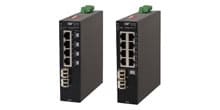
- RuggedNet Industrial Switches and Extenders
- Industrial PoE PSE Fiber Switches
- Multi-Gigabit Managed Industrial PoE+/BT Switches
- Multi-Gigabit Unmanaged Industrial PoE+/BT Switches
- 10G Managed 802.3bt PoE Switches
- 10G Unmanaged 802.3bt PoE Switches
- 10G Managed PoE+ Switches
- 10G Unmanaged PoE+ Switches
- 1G Managed PoE+ Switches
- 1G Unmanaged PoE+ Switches
- 1G Unmanaged 802.3bt PoE Switches
- 1G Managed 802.3bt PoE Switches
- Industrial SPE Switches
- Industrial Ethernet Switches
- Industrial PoE Copper Extenders
- Industrial Power Supplies

- OmniConverter Media Converter, Switches and Extenders
- PoE PSE Media Converters
- 10G Multi-Gigabit / Multi-Rate PoE Media Converter
- 10G Multi-Gigabit / Multi-Rate Media Converter
- 10/100 Multi-port PoE+ Media Converter
- 10/100 PoE+ Media Converter
- 10/100/1000 Multi-Port PoE+ Media Converter
- Industrial 10/100/1000 Multi-Port PoE+ Media Converter
- 10/100/1000 PoE+ Media Converter
- 10/100/1000 PoE++ 60W-100W Media Converter
- Industrial 10/100 Multi-port PoE+ Media Converter
- 1U Rack-Mount Shelf
- PoE PSE Compact Switches
- Multi-Gigabit Managed PoE+/BT Switches
- Multi-Gigabit Unmanaged PoE+/BT Switches
- 10G Managed 802.3bt PoE Switches
- 10G Unmanaged 802.3bt PoE Switches
- 10G Managed PoE+ Switches
- 10G Unmanaged PoE+ Switches
- 1G Managed PoE+ Switches
- 1G Unmanaged PoE+ Switches
- 1G Managed 802.3bt PoE Switches
- 1G Unmanaged 802.3bt PoE Switches
- Ethernet Switches
- Single Pair Ethernet (SPE)
- PoE Copper Extenders
- PoE Injectors
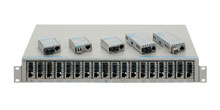
- miConverter Unmanaged Miniature Media Converters
- 10/100/1000 Copper-to-Fiber
- Industrial 10/100/1000 Copper-to-Fiber
- 10/100/1000 Ultra-Compact Copper-to-Fiber
- Gigabit Copper-to-Fiber
- 10/100/1000 Copper-to-Fiber PoE Powered
- 10/100 Copper-to-Fiber
- 10/100 Ultra-Compact Copper-to-Fiber
- 10/100 Copper-to-Fiber PoE Powered
- 18-Module Chassis
- Industrial 10/100 Copper-to-Fiber PoE Powered
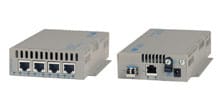
- FlexSwitch Compact Switches
- Solutions
- Company
- Support
- How to Buy
Top 5 Use Cases of Single Pair Ethernet in Industrial Applications

Single Pair Ethernet (SPE) has rapidly emerged as a game-changer in industrial networking. Traditional Ethernet requires multiple twisted pairs for power and data, which increases cable bulk, weight, and cost—especially in complex industrial environments. SPE flips the script by transmitting both data and power over just a single twisted pair, streamlining cabling and enhancing network efficiency.
This lean and flexible technology supports high data rates and long transmission distances, even in harsh industrial conditions. Moreover, SPE is a core enabler of Industry 4.0, offering a seamless, IP-based pathway from the sensor to the cloud. Let's explore the top five use cases where SPE is making a serious impact in the industrial world.
1. Factory Automation
SPE Streamlines Smart Manufacturing Environments
Factory automation is the epicenter of digital transformation in the industrial space. Smart sensors, actuators, and controllers must communicate with each other and with centralized control systems in real time. Traditional wiring infrastructure is often bulky, expensive, and difficult to scale or modify.
How SPE Enhances Factory Automation:
- Simplified Cable Infrastructure: SPE reduces wiring complexity by using fewer conductors.
- Cost Efficiency: Fewer cables mean lower material and labor costs during installation.
- Space-Saving: Ideal for tight enclosures and cable trays where space is at a premium.
- Reliable Communication: Delivers consistent Ethernet performance over long distances.
SPE is compatible and transparent with protocols such as EtherCAT and Profinet, ensuring interoperability in multi-vendor environments. This fosters greater agility in responding to market demands through reconfigurable production lines and scalable automation.
2. Building Automation
Smarter Buildings Start with Smarter Networks
Building automation systems rely on interconnected sensors and devices to manage HVAC, lighting, access control, elevator control, and energy systems. Traditional Ethernet is overkill for many devices, mainly when only small amounts of data are transmitted. SPE provides a right-sized solution.
Benefits of SPE in Building Automation:
- Long Reach: Up to 1000 meters transmission range makes SPE ideal for large campuses or high-rise buildings.
- SPoE aka PoDL (Power over Data Line): Reduces need for separate power wiring, simplifying design and maintenance.
- Standardization: Compatible with BACnet and other IP-based protocols for seamless integration.
- Lower Energy Consumption: Helps meet sustainability targets by reducing infrastructure overhead.
By unifying data and power delivery, SPE minimizes disruptions during retrofits and supports future-ready smart building strategies that reduce operational costs and improve user comfort.
3. Industrial Robotics
Reducing Weight and Complexity in Robotic Systems
Robotic systems in manufacturing demand flexibility, precision, and rapid response times. Cabling, especially heavy Ethernet bundles, can hinder robot movement, add mechanical stress, and require frequent maintenance.
Why SPE Is Ideal for Robotics:
- Ultra-Light Cabling: SPE cables weigh significantly less than standard Ethernet, improving robot dexterity.
- Tighter Bending Radius: Easier to route through robot joints and small enclosures.
- Reduced Mechanical Wear: Less cable strain extends equipment lifespan and minimizes downtime.
- High-Speed Data: Supports real-time control loops critical for motion control applications.
SPE facilitates the next evolution of collaborative robotics (cobots), where space-saving, lightweight connectivity is essential. This paves the way for smarter, safer, and more agile robotic platforms on the factory floor.
4. Process Automation
Reliability and Safety in Hazardous Environments
In industries such as petrochemicals, pharmaceuticals, and mining, process automation requires networking solutions that perform reliably under extreme conditions. Here, safety and operational continuity are paramount.
How SPE Delivers in Process Industries:
- Ethernet-APL Compatibility: Designed for intrinsic safety and supports hazardous zones (Zone 0/1).
- Long-Distance Communication: Enables data transmission over 1000 meters without repeaters.
- Simple Topology: Reduces the need for complex fieldbus infrastructures.
- Real-Time Monitoring: Supports fast data collection for predictive maintenance and compliance.
SPE makes it feasible to connect edge devices directly to cloud-based analytics platforms, creating a seamless, high-performance pipeline from field-level instrumentation to enterprise decision-making tools.
5. Automotive Manufacturing
Single Pair Ethernet (SPE) and Single Pair Power over Ethernet (SPoE) play a vital role in modern automotive manufacturing environments by enabling direct, efficient connectivity to a wide range of devices across the factory floor. As production lines become more automated and data-driven, SPE provides a unified, space-saving solution to connect and power the many endpoints that support real-time monitoring, precision control, and predictive maintenance. This includes everything from sensors to advanced vision systems, ensuring seamless integration across the industrial network.
Devices commonly connected via SPE/SPoE in automotive manufacturing include:
- Industrial sensors (temperature, pressure, proximity, vibration)
- Machine vision cameras for inspection, alignment, and defect detection
- Robotic arms and actuators used in welding, assembly, and painting
- Conveyor systems with embedded control and monitoring units
- Edge devices and controllers for localized processing
- Human-machine interfaces (HMIs) at workstations
- Environmental monitors for dust, gas, or humidity tracking
- Barcode/RFID readers for parts tracking and inventory
- Safety devices such as light curtains, emergency stop buttons, and interlocks
SPE and SPoE help unify these devices on a single network architecture, reducing cabling complexity and enabling smarter, more responsive production lines.
Enabling the Next Generation of Connected Vehicles
The automotive industry is transitioning rapidly towards electric and autonomous vehicles, each packed with sensors, cameras, radar, and infotainment systems. Traditional wiring harnesses are heavy, complex, and costly.
Advantages of SPE in Automotive Environments:
- Reduced Weight: Lighter wiring improves fuel efficiency and vehicle range.
- Simplified Harnesses: Fewer cables streamline production and reduce error rates.
- High Bandwidth: Supports ADAS, camera systems, and in-vehicle networking.
- Robustness: Designed to withstand automotive-grade environmental challenges.
SPE aligns with the needs of connected vehicles, where real-time data sharing between ECUs (Electronic Control Units) and cloud platforms drives innovations in safety, performance, and user experience.
The Benefits of Using Single Pair Ethernet for Industrial Automation
Single Pair Ethernet (SPE) offers a wide array of benefits specifically tailored to the demanding environments of industrial automation. As manufacturing systems become more connected and data-driven, the need for a streamlined, robust, and scalable networking solution becomes essential. SPE addresses these needs by offering both technical and operational advantages:
- Reduced Cabling Complexity: SPE requires only two conductors for both power and data, minimizing the wiring footprint and simplifying installation, especially in tight control cabinets and confined spaces.
- Lower Installation and Maintenance Costs: Fewer cables mean reduced labor, faster deployment, and fewer points of failure, ultimately lowering total cost of ownership.
- Long-Distance Coverage: With capabilities of up to 1,000 meters, SPE eliminates the need for repeaters or additional infrastructure in large plants and remote installations.
- Power and Data Over One Line (PoDL): Eliminates the need for separate power lines, which simplifies system architecture and supports more flexible device placement.
- Seamless Integration with IIoT Systems: Enables direct Ethernet-based connectivity from edge devices like sensors and actuators to control systems or the cloud.
- Standardized Interoperability: Backed by IEEE standards, SPE ensures reliable communication and compatibility across devices from multiple vendors.
For industrial automation, where uptime, scalability, and real-time control are crucial, SPE is a future-ready solution that boosts efficiency while preparing systems for the digital demands of Industry 4.0.
Understanding the IEEE Standards for Single Pair Ethernet
To fully leverage the benefits of Single Pair Ethernet (SPE), it’s essential to understand the IEEE standards that define its specifications. These standards ensure interoperability, performance consistency, and future scalability across a wide range of industrial applications. Here’s a breakdown of the key IEEE standards that support SPE technology:
- IEEE 802.3cg (10BASE-T1L and 10BASE-T1S):
Designed for long-distance (T1L) and short-distance (T1S) applications. T1L supports up to 1,000 meters, making it ideal for process automation, while T1S is optimized for in-cabinet communication. - IEEE 802.3bw (100BASE-T1):
Offers 100 Mbps data rates over a single pair of wires, commonly used in automotive and industrial environments where higher speeds are required in compact spaces. - IEEE 802.3bp (1000BASE-T1):
Provides gigabit speed over single twisted pair cabling, suitable for high-bandwidth applications such as infotainment systems and machine vision in manufacturing. - IEEE 802.3bu (Power over Data Lines – PoDL):
Enables the delivery of power and data over the same twisted pair, reducing infrastructure complexity and supporting energy-efficient designs. - IEEE 802.3da (SPE Multidrop):
Still under development, this upcoming standard will support multidrop networks, enabling multiple devices to connect on a single SPE segment—ideal for sensor-rich environments.
Understanding these standards is critical for selecting the right SPE solution that matches your specific application requirements and ensures future compatibility as technology evolves.
| Standard | Name | Speed | Max Distance | Key Applications |
|---|---|---|---|---|
|
IEEE 802.3cg |
10BASE-T1L / T1S |
10 Mbps |
1,000 m (T1L) |
Building and process automation |
|
IEEE 802.3bw |
100BASE-T1 |
100 Mbps |
Up to 15 m |
Automotive, industrial sensors and actuators |
|
IEEE 802.3bp |
1000BASE-T1 |
1 Gbps |
Up to 40 m |
High-bandwidth systems, machine vision, infotainment |
|
IEEE 802.3bu |
Power over Data Line |
– |
– |
Power and data delivery over the same twisted pair |
|
IEEE 802.3da |
SPE Multidrop (in dev) |
TBD |
TBD |
Multidrop sensor networks, in-cabinet industrial use |
RuggedNet® and OmniConverter® Single Pair PoE and Single Pair Ethernet Switches
Omnitron’s OmniConverter and RuggedNet Single Pair PoE Switches are industrial-grade networking solutions designed to simplify and power smart factory connectivity using Single Pair Ethernet (SPE). These rugged, compact switches feature four 10BASE-T1L SPoE ports compliant with IEEE 802.3cg, ideal for connecting sensors, cameras, actuators, and other edge devices across automotive manufacturing networks. With flexible uplink options— copper or fiber — and configurable operating modes, they support resilient and efficient network designs, including daisy chains, dual networks, and multicast isolation for real-time industrial applications.
Key features:
- Four 10BASE-T1L SPoE ports (3-pin or IEC 63171-2) and two 10/100/1000 RJ-45 or fiber SFP uplinks
- Supports 30VDC Class 10–12 and 58VDC Class 13–15 powered devices via DIP-switch configuration
- Operates in Dual Device Mode for isolated, independent switching paths
- Directed Switch Mode optimizes multicast traffic, reducing unnecessary data flooding
- Redundant uplinks ensure automatic failover and recovery for mission-critical applications
These switches are ideal for harsh industrial environments and support flexible mounting and power configurations for easy deployment across manufacturing floors.
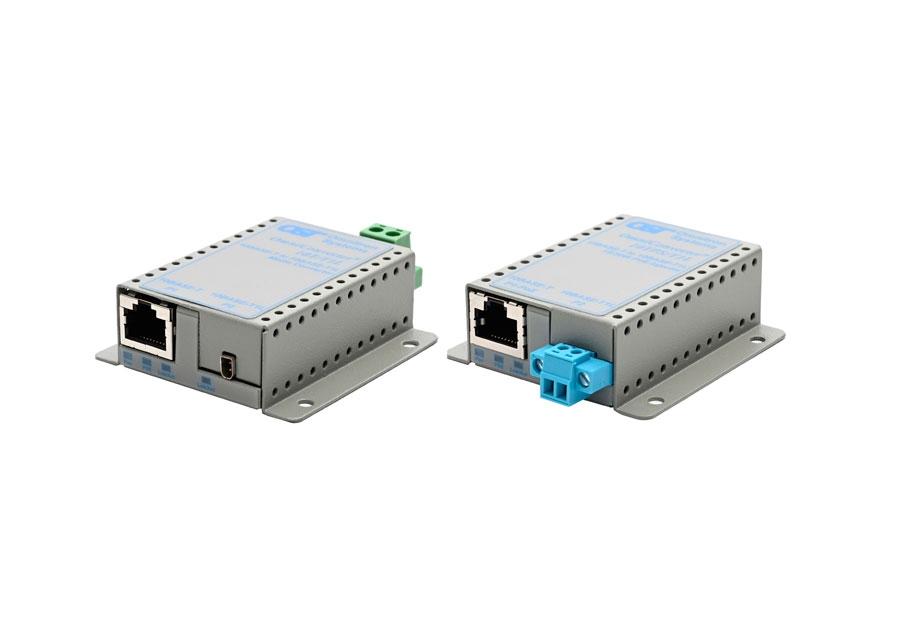
OmniConverter® Single Pair Ethernet Media Converters
The OmniConverter® Single Pair Ethernet series from Omnitron Systems delivers compact, plug-and-play media converters that extend Ethernet over single-pair cabling up to 1km. These IEEE 802.3cg-compliant devices are ideal for industrial and building automation applications.
Highlights:
- Converts 10BASE-T (RJ-45) to 10BASE-T1L
- PoE+ model (10TPS/T1L) delivers data and power
- Operates in extreme temperatures: -40°C to +75°C
- Supports AC adapter or 2-Pin DC power input
- DIN-rail mountable; made in the USA
- Lifetime warranty with 24/7/365 tech support
These rugged converters are perfect for connecting field transmitters, controllers, and IP devices with efficient, long-distance Ethernet.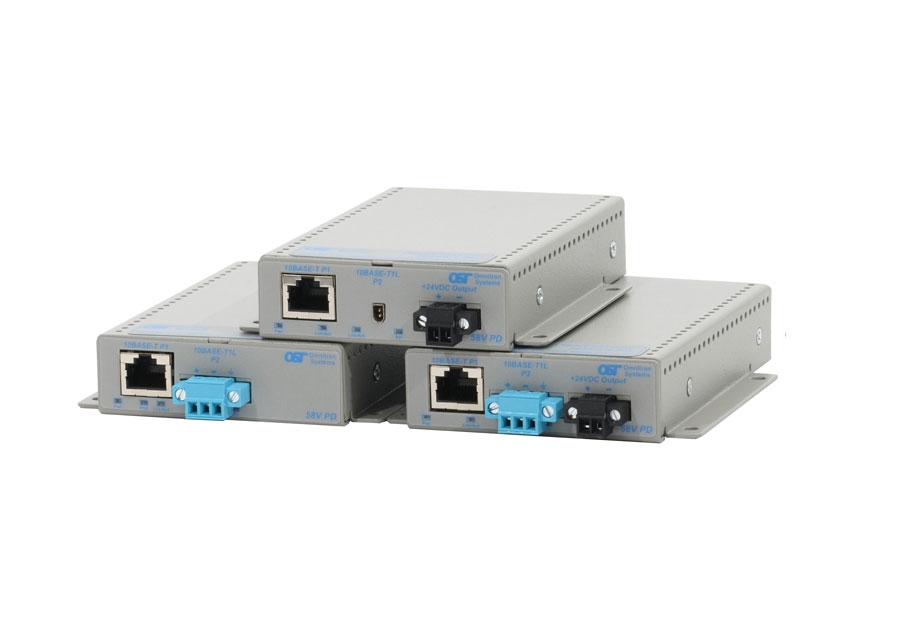
OmniConverter® Single Pair PoE 10Mbps Converters
Single Pair PoE 10Mbps Converters from Omnitron Systems are compact, unmanaged solutions that bridge 10BASE-T Ethernet to 10BASE-T1L Single Pair Ethernet with integrated PoE functionality. Fully IEEE 802.3cg compliant, they deliver data and power over a single pair of wires for distances up to 1km—ideal for industrial automation and remote devices.
Key Highlights:
- Dual PoE support: PoE+/PSE on 10BASE-T and SPoE/PD on 10BASE-T1L
- Compatible with Class 10–15 PD devices
- 12VDC/24VDC splitter outputs and flexible power input
- Rugged design with DIN-rail mounting and extended temperature options
- TAA, BAA, NDAA compliant – Made in the USA with lifetime warranty and 24/7 support
These converters simplify industrial network expansion, offering reliable, space-saving connectivity for modern automation systems.
Frequently Asked Questions (FAQ)
WHAT IS SINGLE PAIR ETHERNET (SPE)?
Single Pair Ethernet is a network technology that transmits data and power over a single twisted pair of wires. Unlike traditional Ethernet that requires multiple wire pairs, SPE provides efficient long-distance communication and is ideal for industrial and automotive environments.
HOW DOES SPE DIFFER FROM TRADITIONAL ETHERNET?
SPE uses only two conductors compared to four or eight in traditional Ethernet. It supports similar data speeds but with reduced cabling weight and size, making it ideal for space-constrained and cost-sensitive applications.
WHAT IS PODL AND WHY IS IT IMPORTANT?
Power over Data Line (PoDL) aka Single Pair Power over Ethernet (SPoe) is a capability of SPE that enables both power and data to be delivered over the same twisted pair. This feature reduces cabling infrastructure, simplifies device deployment, and lowers installation costs.
IS SINGLE PAIR ETHERNET READY FOR INDUSTRY 4.0?
Absolutely. SPE is a foundational technology for Industry 4.0 and IIoT, enabling seamless IP-based connectivity from field devices to the cloud. It supports real-time analytics, predictive maintenance, and scalable automation.
CAN I UPGRADE EXISTING INFRASTRUCTURE TO SUPPORT SPE?
Yes, many vendors offer SPE-compatible switches, gateways, and converters. While not all legacy devices can support SPE natively, hybrid architectures can bridge the gap during phased upgrades.
Conclusion
Single Pair Ethernet is more than just a new cabling standard—it’s a pivotal force in driving digital transformation across industrial sectors. By simplifying network infrastructure, reducing operational costs, and enabling long-distance, high-performance connectivity, SPE empowers organizations to modernize and scale with confidence.
From boosting robotic efficiency to streamlining building automation and increasing safety in process-critical environments, SPE is setting the stage for a smarter, more connected industrial future.
At Omnitron Systems, we enable this transformation by delivering cutting-edge SPE solutions that are engineered for reliability and performance. If your business is seeking scalable, forward-thinking networking infrastructure, now is the time to explore the potential of Single Pair Ethernet. It’s a strategic investment in your operational resilience and long-term success.

